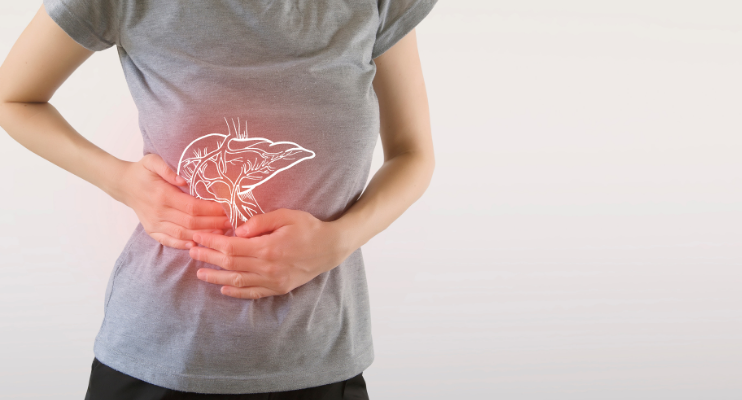Non-Alcoholic Fatty Liver Disease (NAFLD) is a condition where you have too much fat built up in your liver, and it can cause damage. It is estimated that 10-20% of the United States population has this condition and it can be hard to identify because many of the symptoms are silent.1 One of the major risks and concerns with this condition is developing scar tissue on the liver which causes permanent damage to the organ.


The liver and the pancreas have a harmonious relationship for keeping blood glucose levels in range for healthy people, and in diabetes the communication is disrupted. The pancreas makes insulin, which turns glucose into energy and the liver stores and causes the release of glucose when the levels in the blood get too low. They also both help with digestion, with the liver helping to filter out toxins in the body.
According to an article from February 2020 in Endocrine Review, there is a spectrum of non-alcoholic fatty liver disease, and for some people it increases the risk significantly for heart disease.2 Research has found that having type 2 diabetes and obesity put you at a higher risk for having or developing NAFLD. (1,2)
In August 2020, researchers published a review of the current research to see what the risk of people with type 1 diabetes have in getting NAFLD. They discuss how type 1 and type 2 diabetes have differences but also similarities that could put people with type 1 at an increased risk for NAFLD.3 They reviewed data on 3,699 adults and 202 children/adolescents with type 1 diabetes, and it showed that the risk for NAFLD for adults with type 1 is 22% and for kids is 7.9%.3
They also discuss that this level of risk is not necessarily conclusive, because of how many differences there were in tools used to diagnose NAFLD and diagnoses that were received being inconsistent.3 The researchers felt that based on the review of the current data, people with type 1 diabetes have the same or higher risk as the general population of having NAFLD.3 They suggest that people with type 1 diabetes should be “considered a group at risk for NAFLD”3 (p3853).
Be on the lookout for any of these symptoms:
- Severe tiredness
- Weight loss that’s unexplained
- Weakness
- Yellowing skin or eyes
- Long-lasting itching
You may want to ask your doctor to do a work-up for NAFLD. In addition, being screened routinely for elevated liver enzymes (usually included in your yearly blood draw) is an important way to detect any issues early on.
- John’s Hopkins article on Non-Alcoholic Fatty Liver Disease: https://www.hopkinsmedicine.org/health/conditions-and-diseases/nonalcoholic-fatty-liver-disease
- Nonalcoholic Fatty Liver Disease in Adults: Current Concepts in Etiology, Outcomes, and Management: https://academic.oup.com/edrv/article-abstract/41/1/66/5601173?redirectedFrom=fulltext
- Prevalence of Nonalcoholic Fatty Liver Disease (NAFLD) in Patients With Type 1 Diabetes Mellitus: A Systematic Review and Meta-Analysis: https://www.ncbi.nlm.nih.gov/pmc/articles/PMC7526735/
Written and clinically reviewed by Marissa Town, RN, BSN, CDCES
